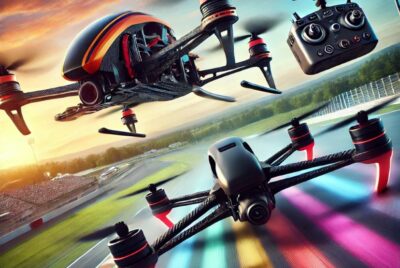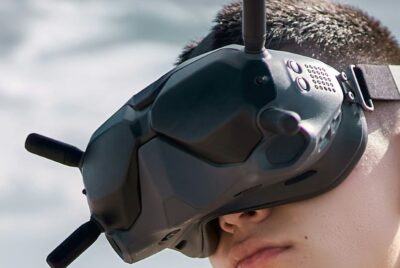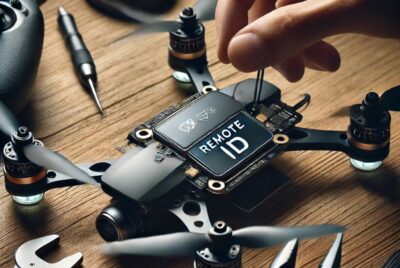Mini FPV Drones: Big Thrills in a Small Package
Hey there! Some links on this page are affiliate links which means that, if you choose to make a purchase, I may earn a small commission at no extra cost to you. I greatly appreciate your support! Please see our Disclosure to learn more.
Introduction
In the exciting world of First-Person View (FPV) drones, mini FPV drones have carved out a special place in the hearts of pilots and enthusiasts. These tiny, agile machines offer an incredible flying experience, packed with all the thrills and excitement of their larger counterparts, but in a compact and accessible package. In this article, we’ll explore the world of mini FPV drones, their characteristics, benefits, and the endless possibilities they offer.
What are Mini FPV Drones?
Mini FPV drones are small, lightweight quadcopters or multirotors equipped with FPV technology, allowing pilots to fly from a first-person perspective using a video feed transmitted to goggles or a display. These drones typically measure less than 250mm in diagonal size and weigh under 250 grams, making them incredibly nimble and maneuverable.
Despite their small size, they offer many of the same features and capabilities as larger FPV drones, including acrobatic flight, high-speed racing, and immersive video experiences. Their compact size also makes them ideal for flying in confined spaces, indoors, or in areas where larger drones may be impractical or prohibited.
Components of a Mini FPV Drone
Mini FPV drones may be small, but they pack a lot of technology into their compact frames.
- The frame and body are designed for strength, lightweight, and aerodynamics, often using materials like carbon fiber or durable plastics.
- High-performance brushless motors and propellers work together to provide the thrust and agility needed for acrobatic flight.
- The flight controller, the brain of the drone, combines with Electronic Speed Controllers (ESCs) to stabilize the aircraft and respond to the pilot’s commands.
- An FPV camera, usually a small CMOS sensor, captures the drone’s view, while a video transmitter sends the live feed to the pilot’s goggles or display.
- A radio receiver and antenna allow the drone to communicate with the pilot’s transmitter.
- A compact battery, often a single-cell or two-cell LiPo, powers the entire system.
Popular Models
Mini FPV drones come in various classes and styles, each designed to cater to different flying experiences and preferences. From the ultra-compact and agile Tiny Whoop class, perfect for indoor flying, to the lightweight yet powerful Toothpick class, ideal for outdoor freestyle and racing, and the stable Cinewhoop style, engineered for capturing smooth, cinematic footage—each class offers distinct features that make them suitable for specific environments and purposes. Understanding these differences can help pilots choose the right drone for their needs, whether they’re beginners, hobbyists, or aspiring filmmakers.
Tiny Whoop Class Mini FPV Drones
HGLRC Petrel 85
The HGLRC Petrel 85 is a robust micro drone, perfect for both beginners and experienced pilots looking for a durable option for indoor and outdoor flying. It features a lightweight frame, allowing for agile maneuvers, and is equipped with a powerful 1103 8000KV motor, which delivers a smooth flight experience. The drone’s FPV camera offers clear video transmission, making it ideal for those who want to enjoy immersive first-person-view flights. Its compact design makes it a great choice for flying in tight spaces or urban environments.
EMAX Tinyhawk 3
The EMAX Tinyhawk 3 is an impressive micro FPV drone that’s designed for both fun and performance. It’s known for its durable build and improved flight stability, making it suitable for beginners as well as seasoned pilots. The Tinyhawk 3 features an upgraded Runcam Nano 4 camera, providing crisp and clear FPV footage, and its robust 1102 15000KV motors ensure a responsive and exhilarating flight experience. This drone is also compatible with both 1S and 2S batteries, allowing for flexibility in power and flight time, making it a versatile choice for indoor and outdoor flying.
BETAFPV Meteor75
The BETAFPV Meteor75 is a versatile micro drone that excels in both indoor and outdoor environments. With its lightweight yet durable frame, it offers excellent maneuverability, making it ideal for navigating tight spaces. The Meteor75 is powered by 1102 18000KV motors, which provide a quick and responsive flight, perfect for racing or freestyle flying. Additionally, it comes equipped with a high-quality FPV camera, ensuring a smooth and immersive flying experience. Its efficient power system and long battery life make it a reliable choice for extended flight sessions.
Toothpick Class Mini FPV Drones
Toothpick class drones are a step up from Tiny Whoops, offering a more powerful and responsive flight experience while maintaining a lightweight design. These drones usually feature a minimalistic frame with no propeller guards, which reduces weight and increases agility. Toothpick drones are typically used for outdoor flying, where their increased power and speed can be fully appreciated. They are favored by pilots who enjoy aggressive flying, freestyle, and light racing, as they offer a perfect balance between performance and portability.
Happymodel Crux3
The Happymodel Crux3 is a lightweight and agile Toothpick drone, designed for those who crave high-speed performance and precision. Weighing in at just 33 grams, this drone is incredibly responsive, making it perfect for tight maneuvers and aggressive flying styles. It features powerful 1202.5 11500KV motors, which provide a thrilling flight experience, especially when paired with a 2S battery. The Crux3 is also equipped with an excellent FPV camera that delivers clear and stable video, ensuring an immersive flight. Its minimalist design and durable frame make it an excellent choice for both beginners and advanced pilots looking for a reliable Toothpick drone.
T-Motor Feather120
The T-Motor Feather120 is a standout in the Toothpick drone category, offering a blend of power, stability, and lightweight design. With its premium T-Motor components, including the efficient 1103 8000KV motors, the Feather120 delivers smooth and responsive flights, making it a favorite among freestyle pilots. The drone’s carbon fiber frame adds durability without compromising on weight, allowing for agile and precise flying. Its FPV system provides clear video transmission, making it ideal for racing and freestyle sessions. The T-Motor Feather120 is a versatile and reliable option for pilots looking for high performance in a compact size.
Cinewhoop Style Mini FPV Drones
Cinewhoop style drones are specialized for capturing smooth and stable aerial footage, making them a favorite among filmmakers and content creators. These drones are characterized by their ducted propeller guards, which not only enhance safety but also reduce the risk of damaging the environment or the drone itself during close-proximity flights. Cinewhoops are designed to carry small HD cameras, allowing pilots to capture high-quality video in tight or challenging environments. Their stability and controlled flight characteristics make them ideal for cinematic flying in both indoor and outdoor settings.
Diatone Taycan C25
The Diatone Taycan C25 is a compact and durable Cinewhoop drone, designed for capturing smooth and stable footage in tight spaces. With its robust build and ducted propeller guards, the C25 is perfect for indoor flying or close-proximity shots, providing safety and protection. It’s equipped with powerful 1404 3600KV motors, offering a good balance between speed and control, making it easy to navigate through challenging environments. The C25 is also compatible with high-quality HD cameras, allowing pilots to capture cinematic video with minimal jello effect. Whether you’re an aspiring filmmaker or a hobbyist looking to capture unique perspectives, the Taycan C25 is a reliable choice.
iFlight Protek35
The iFlight Protek35 is a versatile Cinewhoop drone that excels in both performance and video quality. With its larger 3.5-inch propellers, the Protek35 offers increased lift and stability, making it capable of carrying heavier cameras like the GoPro Hero series. It features powerful 2203.5 3600KV motors, ensuring a smooth and responsive flight even in demanding conditions. The drone’s durable frame and propeller guards provide protection during close-quarter flying, while its advanced FPV system delivers crisp and clear video transmission. The iFlight Protek35 is an excellent choice for pilots looking to capture cinematic shots with a reliable and capable Cinewhoop.
Benefits of Flying Mini FPV Drones
Flying mini FPV drones offers a range of benefits and advantages over their larger counterparts. Their small size and agility make them perfect for flying indoors, in tight spaces, or around obstacles, opening up new possibilities for exploration and creativity. They also offer improved safety and reduced risk, as their lightweight and enclosed propellers are less likely to cause damage or injury in the event of a crash.
They are also more cost-effective and affordable than larger FPV drones, making them an excellent entry point for beginners or those on a budget. The portability and convenience allows you to take them anywhere, from your backyard to a park or even on vacation, for spontaneous flying adventures.
Getting Started
If you’re new to the world of mini FPV drones, getting started is easier than you might think. Begin by choosing the right drone for your skill level and intended use, whether it’s a pre-built ready-to-fly (RTF) kit or a custom-built drone. Essential accessories include FPV goggles or a display, spare batteries and propellers, and a charger.
Learning to fly and control your mini FPV drone takes practice and patience, but with the right mindset and some helpful resources, such as online tutorials and simulators, you’ll be soaring in no time. Always prioritize safety and follow best practices, such as flying in open areas, maintaining visual line of sight, and respecting the privacy of others.
Customizing and Upgrading
One of the joys of mini FPV drones is the ability to customize and upgrade them to suit your specific needs and preferences. As you progress in your skills and experience, you may want to explore different components and configurations to enhance your drone’s performance and capabilities.
Selecting the right motors and propellers can improve speed, efficiency, and flight times, while upgrading your camera and video transmission system can provide better image quality and range.
Optimizing your battery and power system can also extend your flight times and improve overall performance. The modular nature allows for endless possibilities in customization and experimentation.
Racing and Freestyle
Mini FPV drones are not just for casual flying; they also offer exciting opportunities for racing and freestyle flying. Mini FPV racing events and competitions, often held in indoor venues or specially designed courses, pit pilots against each other in high-speed, adrenaline-fueled races.
Setting up your own obstacle racing course is a fun way to practice and compete with friends.
Freestyle flying allows you to express your creativity and push the limits of what’s possible, combining acrobatic maneuvers, flips, and rolls with unique environments and obstacles.
Mini FPV drones are also excellent tools for capturing amazing aerial footage, thanks to their agility and ability to fly in narrow, low-altitude spaces.
Maintenance and Troubleshooting
To keep your mini FPV drone flying at its best, regular maintenance and troubleshooting are essential. Develop a routine of cleaning and inspecting your drone after each flight, checking for any signs of wear or damage. Replace worn or broken parts, such as propellers or antennas, as needed.
Learn how to troubleshoot common issues, such as poor video feed, erratic flight behavior, or loss of control, and keep spare parts on hand for quick fixes. Proper battery care, including storage, charging, and disposal, is also crucial for maximizing performance and longevity.
The Future of Mini FPV Drones
As technology continues to advance, the future of mini FPV drones looks brighter than ever. Improvements in motor and battery efficiency, along with developments in camera sensors and video transmission systems, are pushing the boundaries of what’s possible in a small package.
Emerging trends, such as autonomous flight capabilities, object avoidance systems, and AI-assisted piloting, are making these drones more accessible and capable for a wider range of users and applications. From aerial photography and inspection to education and entertainment, the potential uses are vast and exciting.
Conclusion
Mini FPV drones offer an incredible flying experience, combining the thrill and excitement of FPV with the accessibility and convenience of a compact, portable package. Whether you’re a beginner looking to explore the world of FPV or an experienced pilot seeking new challenges, mini FPV drones have something to offer. As you embark on your journey, remember to prioritize safety, learn from others in the community, and most importantly, have fun. With the right knowledge, skills, and equipment, the sky is truly the limit for what you can achieve.
FAQs
- Are mini FPV drones suitable for beginners?
Yes, mini FPV drones are an excellent choice for beginners due to their affordability, durability, and ease of use. Many models come in ready-to-fly (RTF) kits with everything you need to get started, and their small size makes them less intimidating and easier to control than larger drones. - Can I fly mini FPV drones outdoors?
While mini FPV drones are often associated with indoor flying, many models are capable of flying outdoors as well. However, it’s essential to choose a drone suitable for outdoor conditions, such as wind resistance and range, and always follow local regulations and guidelines for outdoor drone flight. - How long can mini FPV drones fly on a single battery?
Flight times for mini FPV drones vary depending on factors such as battery capacity, motor efficiency, and flying style. On average, most can fly for 3-5 minutes on a single battery, with some high-performance models reaching up to 10 minutes or more. - What is the range of a typical mini FPV drone?
The range of a mini FPV drone depends on the power and type of video transmitter, as well as the environment and obstacles. Most have a range of 50-100 meters, with some high-end models capable of reaching up to 200 meters or more in ideal conditions. - Can I use mini FPV drones for aerial photography and videography?
While mini FPV drones are primarily designed for the thrill of immersive flying, many models, especially Cinewhoop style drones, are capable of capturing stunning aerial footage. Their small size and agility allow them to fly in tight spaces and capture unique perspectives that larger drones cannot access. However, keep in mind that the image quality and stability may not match that of dedicated camera drones.
Final Thoughts
Mini FPV drones have opened up a world of possibilities for pilots and enthusiasts, offering an accessible and exciting way to experience the thrill of immersive flying. Whether you’re diving into the world of FPV for the first time or looking to expand your horizons with a new challenge, these drones provide an incredible combination of fun, affordability, and portability.
As with any form of drone flying, safety and responsibility should always be top priorities. Take the time to learn and understand the capabilities and limitations of your drone, and always operate within the bounds of local laws and regulations. Be mindful of others and respect their privacy, and always fly in a way that minimizes risk to people, property, and the environment.
Ultimately, the joy of flying mini FPV drones lies in the freedom, creativity, and sense of accomplishment they provide. So embrace the challenge, push your boundaries, and let your imagination take flight. The exhilarating world of mini FPV drones is waiting for you to explore, one thrilling flight at a time.












